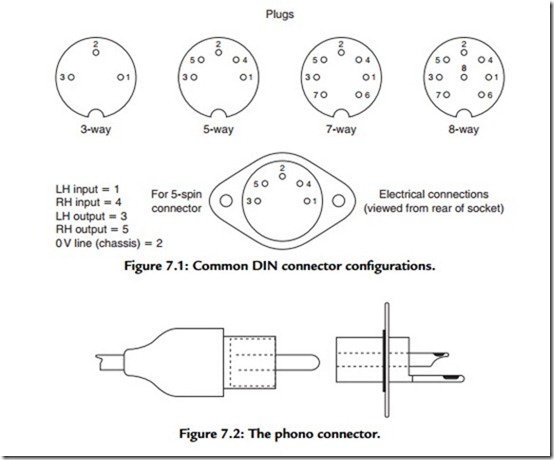Requirements
Most high-quality audio systems are required to operate from a variety of signal inputs, including radio tuners, cassette or reel-to-reel tape recorders, compact disc players, and more traditional record player systems. It is unlikely at the present time that there will be much agreement between the suppliers of these ancillary units on the standards of output impedance or signal voltage that their equipment should offer.
Except where a manufacturer has assembled a group of such units, for which the interconnections are custom designed and there is in-house agreement on signal and impedance levels—and, sadly, such ready-made groupings of units seldom offer the highest overall sound quality available at any given time—both the designer and the user of the power amplifier are confronted with the need to ensure that their system is capable of working satisfactorily from all of these likely inputs.
For this reason, it is conventional practice to interpose a versatile preamplifier unit between the power amplifier and the external signal sources to perform the input signal switching and signal level adjustment functions.
This preamplifier either forms an integral part of the main power amplifier unit or, as is more common with the higher quality units, is a free-standing, separately powered unit.
Signal Voltage and Impedance Levels
Many different conventions exist for the output impedances and signal levels given by ancillary units. For tuners and cassette recorders, the output is either that of the German Deutsches Industrie Normal (DIN) standard, in which the unit is designed as a current source, which gives an output voltage of 1 mV for each 1000 ohms of load impedance, such that a unit with a 100-K input impedance would see an input signal voltage of 100 mV, or the line output standard, designed to drive a load of 600 ohms or greater, at a mean signal level of 0.775 V rms, often referred to in tape recorder terminology as OVU.
Generally, but not invariably, units having DIN type interconnections, of the styles shown in Figure 7.1, will conform to the DIN signal and impedance level convention, whereas those having “phono” plug/socket outputs, of the form shown in Figure 7.2, will not. In this case, the permissible minimum load impedance will be within the range 600 to 10,000 ohms, and the mean output signal level will commonly be within the range 0.25–1 V rms.
An exception to this exists regarding compact disc players, where the output level is most commonly 2 V rms.
